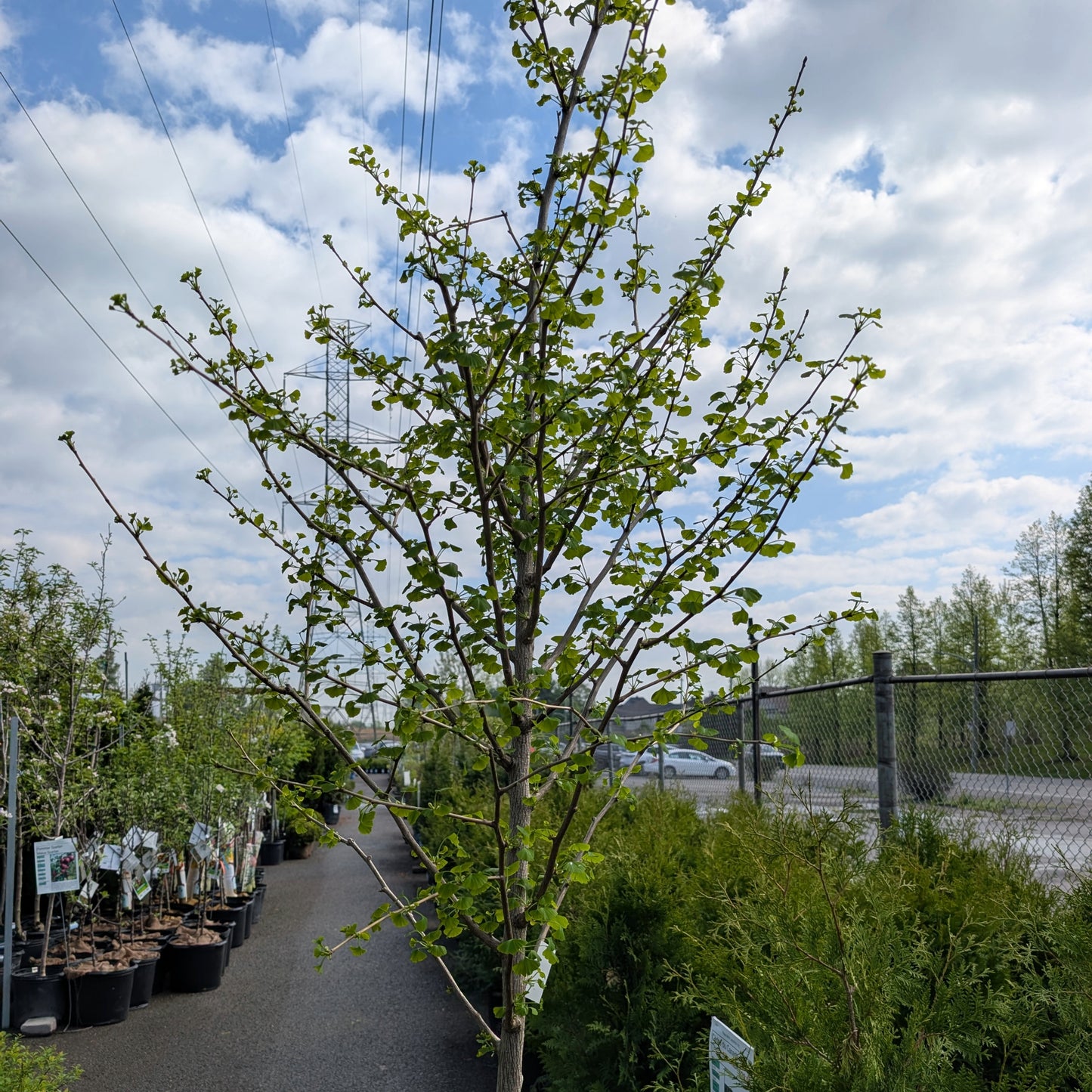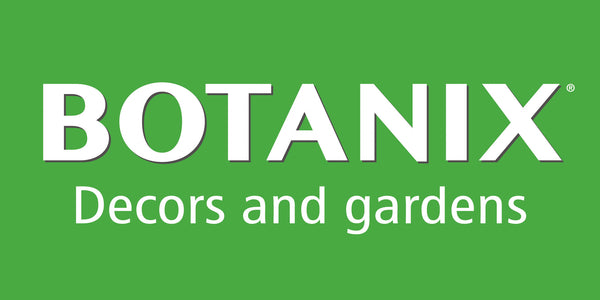1
/
of
5
Ginkgo biloba Goldspire™
Ginkgo biloba 'Goldspire' - Ginkgo Goldspire™
Ginkgo biloba 'Goldspire' - Ginkgo Goldspire™
Exposure
- Sun
- Partial shade
Rusticity
4, 5, 6, 7, 8, 9
- Narrow columnar habit
- Brilliant golden fall colour
- Non-fruiting (male)
- Highly tolerant (pollution, drought)
- Moderate growth
Bring architectural elegance and a golden glow to your garden with the Ginkgo Goldspire™! Far denser and more narrowly pyramidal than most, this non-fruiting (male) deciduous tree is a true living sculpture. Its rich green, delightfully curled foliage transforms into magnificent buttery shades of yellow and gold in autumn, offering an unforgettable sight that will illuminate your urban landscape or small garden.
Characteristics
- Foliage: New foliage emerges a rich shade of green, fan-shaped and delightfully curled. It keeps this colour through summer, then turns buttery shades of yellow and gold in autumn before dropping. It forms a dense and narrowly pyramidal shape. The foliage is deciduous (falls in winter).
- Flowering: Flowers are insignificant.
- Light Requirements: Needs full sun (6+ hours per day). Can tolerate part shade, but the best fall colours and optimal growth will occur in full sun.
- Habit: Characterized by a narrow columnar habit with a dense pyramidal shape.
- Growth: Its growth is moderate. After 10 years' growth, it should reach about 4.2 to 4.8 meters (14 to 16 feet) high and just 1.5 to 1.8 meters (5 to 6 feet) wide.
- Humidity: Prefers moist, well-drained soil. Requires regular watering.
- Soil: Adapts to a wide range of normal, loamy, average, and well-drained soils.
- Temperature: Very hardy. Tolerant of heat.
- Watering: Regular watering. Once established, it is drought tolerant.
- Resistances: Highly tolerant of air pollution, heat, and other environmental stresses. It is disease resistant (including Verticillium wilt) and pest resistant.
Usage
- Types of Use: A highly ornamental specimen tree, excellent for small gardens or as a street tree due to its tolerance of urban pollution and narrow habit. Ideal for borders, or for foliage interest.
- Decorative Benefits: Its dense columnar form and foliage that shifts from rich green to spectacular golden hues in autumn make it a major focal point. It adds architectural structure and a dazzling splash of colour.
Maintenance
- Fertilization: An annual application of compost in spring can promote healthy growth.
- Pruning: Shear back this small Ginkgo in early spring for the first 3 to 4 years to ensure it develops a tight, dense habit. After that, minimal pruning is needed to maintain its desired shape.
- Planting:
- Spacing: Approximately 1.5 to 1.8 meters (5 to 6 feet) from structures or other large shrubs to allow for its full development.
- Depth: Plant at the same depth as it was in its container.
- Period: Spring or early fall are the best times for planting.
Plant details
Dimensions
Dimensions
Spacing
- cm
Spread
150 - 180 cm
Height
420 - 550 cm
Spacing
- in.
Spread
59 - 71 in.
Height
165 - 217 in.
Characteristics
Characteristics
Habit:
- Columnar
Flowering colours:
Plant needs
Plant needs
Watering:
- Tolerates dry, well-drained soil
- Tolerates wet soil
Maintenance:
- Easy
- Prune Spring (first few years)
Soil requirement:
Features
Features
Resistance:
- Heat
- Cold
- Drought
- Air Pollution
- Diseases
- Pests
Attract:
Use:
- Border
- Accent
- Foliage Interest
- Street Tree
- Urban Garden
Attribute:
- Moderate Growth
- Autumn Colour
- Non-Toxic to Cats
- Non-Toxic to Dogs














